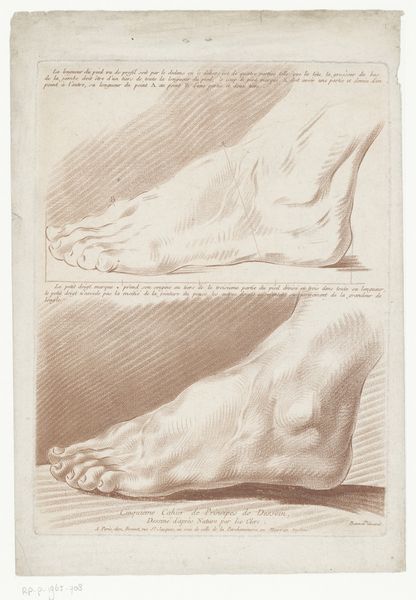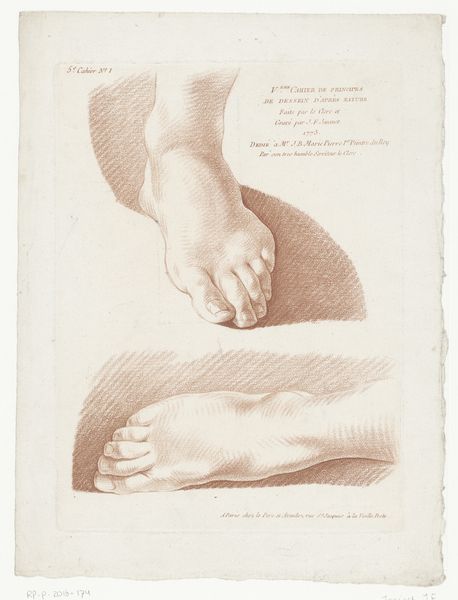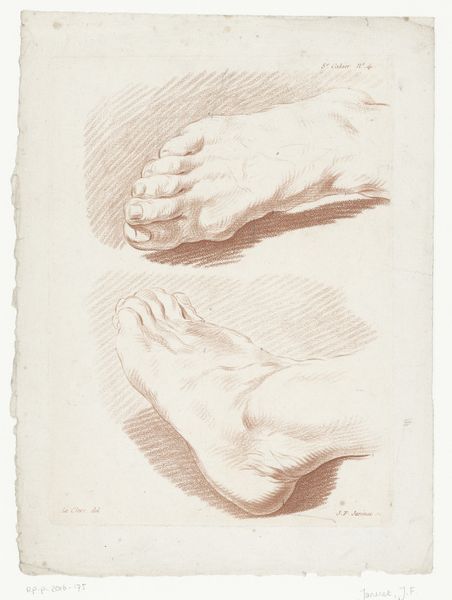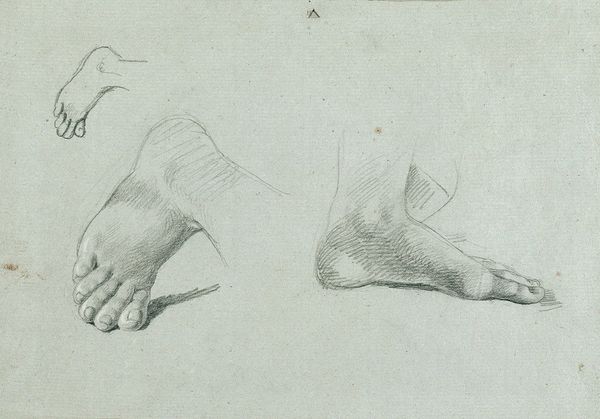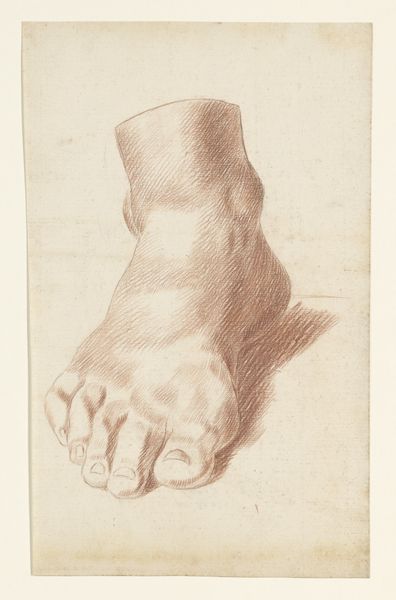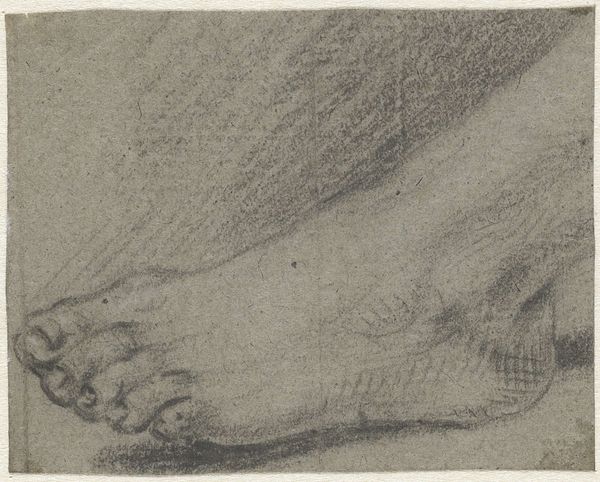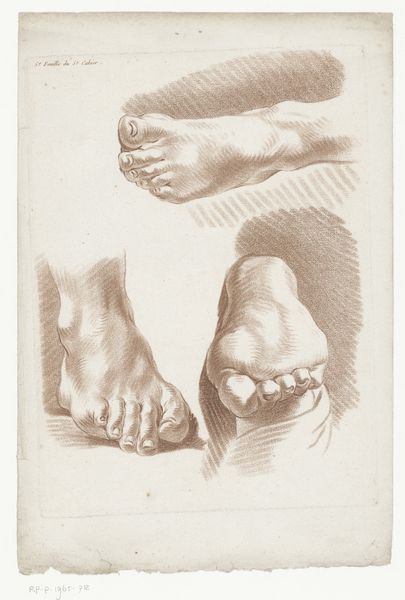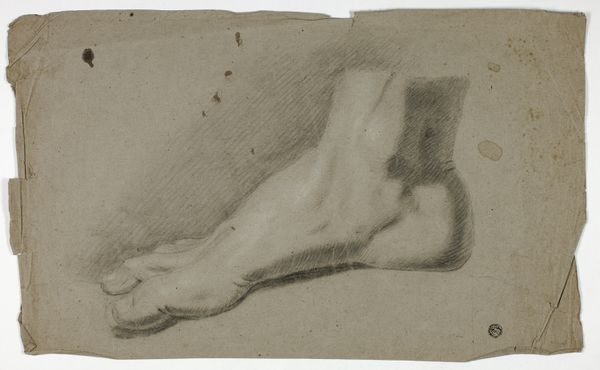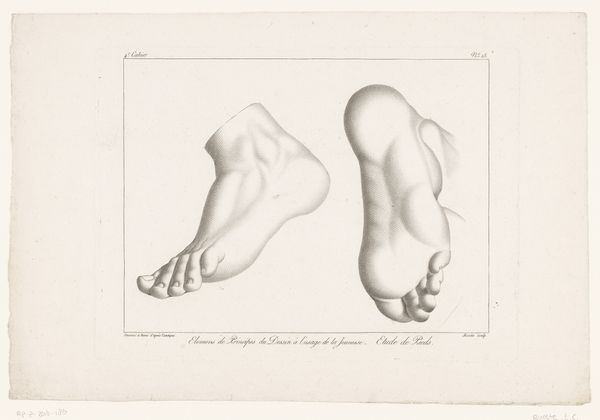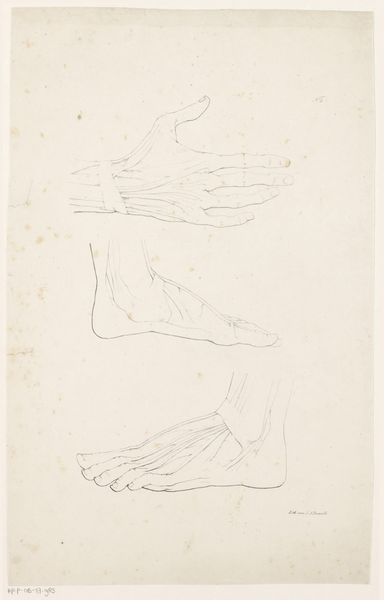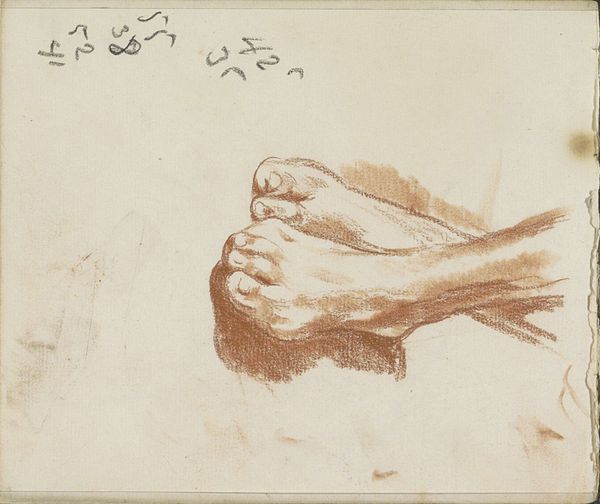
drawing, coloured-pencil, paper
#
portrait
#
drawing
#
coloured-pencil
#
pencil sketch
#
paper
#
coloured pencil
#
academic-art
Dimensions: height 153 mm, width 207 mm
Copyright: Rijks Museum: Open Domain
Curator: This delicate drawing, created with colored pencil on paper, is titled "Study of a Foot" and is attributed to Anton Domenico Gabbiani, likely created sometime between 1662 and 1726. What are your initial thoughts? Editor: It feels surprisingly intimate, even vulnerable. The rendering in red chalk softens what could have been a clinical study. I'm struck by the delicacy of the lines used to describe the form. Curator: It's interesting that you pick up on vulnerability. Artists of this period routinely practiced anatomical studies as part of their training. Knowing the classical tradition, they’re literally grounding the figure, a critical foundation. I see a real connection here with the art academies and their role in standardizing artistic practices. Editor: The hatching used to define the shadow creates a lovely contrast against the smooth areas of the foot, directing our focus to its shape and the subtle turn of the toes. What is interesting about this approach? It's hyper realistic but feels classical in its presentation and arrangement. Curator: Precisely. In the context of the time, these drawings would have been part of an educational process, almost like preparatory exercises. We shouldn’t overlook the significance of these academies, as their approval became increasingly important for an artist’s social mobility and patronage networks. The ability to accurately represent the human form was central to establishing their position. Editor: Yes, but I am equally moved by the sensitivity. It has that sanguine undertone, where you capture not just anatomy, but presence, which moves it beyond purely academic exercise. Curator: Well, this piece, beyond its purely functional origin, it stands alone now for its elegance and historical testimony of the creative processes within those Italian circles of Gabbiani's era. Editor: Indeed. It prompts us to consider how formal training has evolved, with drawing no longer central as a kind of discipline.
Comments
No comments
Be the first to comment and join the conversation on the ultimate creative platform.
